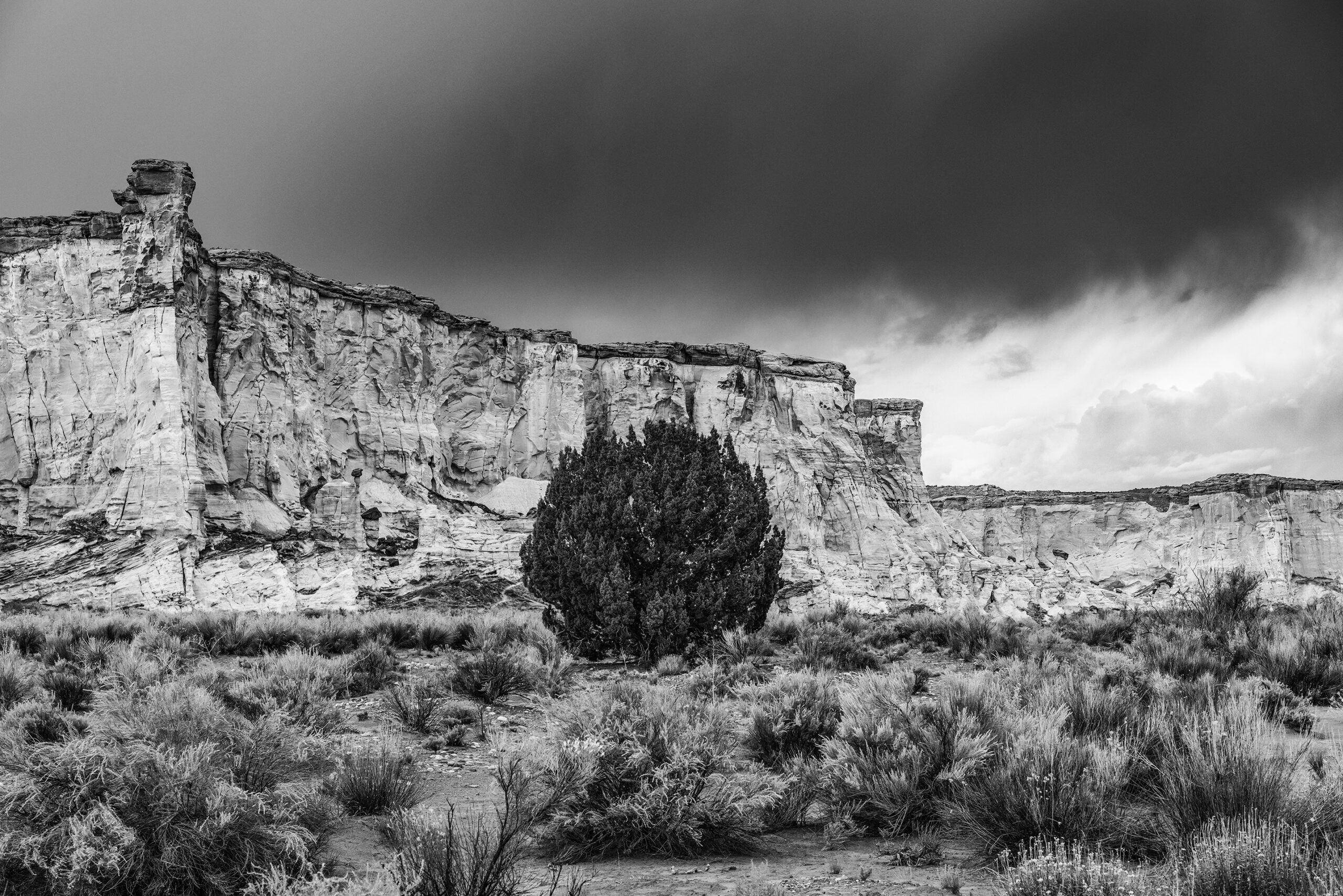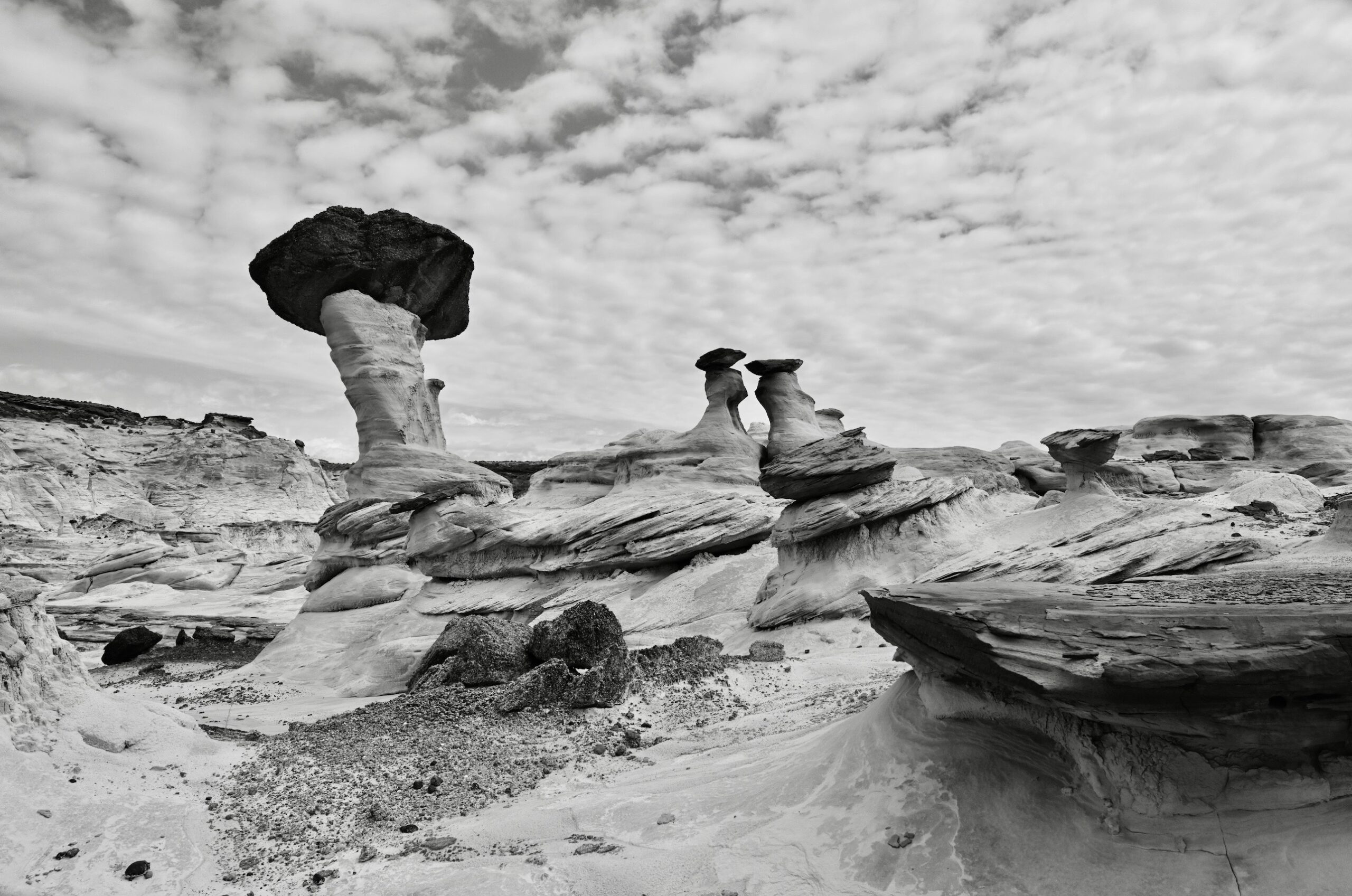There is a common thread in Priscilla Rattazzi’s extraordinary exhibition of photographs, Between Worlds, closing this week in Milan at the R+V Gallery. It is represented by three statuesque and beautiful linden trees overlooking the banks of Georgica Pond in East Hampton. Edmondo di Robilant and Marco Voena chose a photo of the artist amid Hurricane Bob in 1991, snapped at the time by a friend of hers, Eleanor Kennedy, as the exhibition’s symbol. In the image, the artist runs through the storm on the lawn of her property in front of her linden trees, shaken by the wind, but still there, protecting her from the hurricane.

In the exhibition, Rattazzi’s first in Milan after another debut in London just a few months ago, the title is equally symbolic. Between Worlds gives the idea of the suspension between two distinct realms: America and Europe, past and present, stillness and torment, happiness and life’s unwanted surprises. Above all, they are the many manifestations of nature. The two worlds can be the rocks smoothed into perfect figures by millennia of erosion in “Hoodooland” or the portraits of people with their dogs, “Best Friends,” or the “Three Lindens.” She even makes room for a 1975 picture of the artist Alighiero Boetti in Spoleto with a cigarette butt between his fingers – his trademark look, equal parts surprised and compelling, the portrait of a bygone era. In the exhibition, the rocks, plants, dogs, and people are inextricably linked by the common thread of ecstatic humanity.
The natural sculptures in Grand Staircase Escalante’s “Hoodoo” formations in southern Utah are profoundly human figures. Entering the gallery, the first work we see, Yermo Canyon III, is a pair of rocks engaged in a light dance, about to give each other a loving kiss, each donning an elegant stone hairstyle. They are also natural sculptures poised between life and death in the fragility of the moment. Solid, yet a breath away from collapse because of the precariousness of the balance, but also because oil drills were about to destroy a good part of that natural park thanks to special permits granted by the Republican Congress in the first Trump administration.
Then came “Hoodooland.” Rattazzi’s courageous documentation/denunciation, exhibited in New York in 2020 at the Staley-Wise Gallery, captured the imagination of Americans, mobilized the New York Times, and gave a megaphone to the entire landscape. Joe Biden later canceled the permits, saving an invaluable natural heritage. We don’t know for how long: Donald Trump, with his inaugural slogan, “Drill Baby Drill,” may decide to go ahead with his old goal, encouraging devastating extractions from that magical landscape of life-laden stones.
Further on we find people with their dogs, always close, always in symbiosis; like the lovely, intimate portrait of author Alberto Moravia with Arancio or that of Gianni Agnelli, the artist’s uncle, with his husky.
And we arrive at the “Three Lindens” series. The three lindens, very close together and always photographed in a group by Rattazzi, embrace and talk, now are motionless under a blanket of snow or agitated in the storm of hurricanes. One of the works looks like an abstract self-portrait of the artist, of her frizzy, knotted, tangled hair and her state of mind when she photographed the trees that already no longer belonged to her. The exhibition Three Lindens debuted at the Peter Marino Art Foundation in June 2023 in Southampton. A “solo” dedicated to these beautiful, ancient, nearly 300-year-old trees, the oldest linden trees in New York State. With their unshakable permanence and centuries-old memory, they represented for the artist an anchor in a tempestuous time. The storm has shaken them, tormented them, bent them, but in the end, their deep roots have won out: they remain upright and ever more projected into the sky. After all, as Rattazzi herself writes in the preface to the catalog designed by Luca Stoppini – a box similar to those old Ilford boxes, with writings and images collected by card–“Three Lindens was a way of seeking relief after being uprooted from the house where I had lived for three decades. My embrace with this core of old trees was a way to feel anchored.”

Before coming to Milan, Rattazzi’s exhibition itinerary passed through R+V in London in the fall and before that through another exhibition, Chapters – Capitoli, at the Italian Cultural Institute in New York last summer. Curated by then-director Fabio Finotti, the exhibition was dedicated to an artist who has reached her maturity living and growing professionally in America since the mid-1970s, when she began as a fashion and costume photographer and then landed on a fully artistic path, also moving from darkroom to digital. She remains in America, but always with deeply European and Italian roots.
That is why the linden trees are symbolic of the exhibition on another level as well. They were said to have been transported to America by a French sailing ship. Actually, they are original North American specimens, dominating Georgica Pond, one of the most beautiful lakes in the East End of Long Island, and consistently dotted with “Barnstable Cats,” – delightful little sailboats, the only class allowed on the lake. The beauty of the place also lies in the long, thin arm of white sand that on the south separates the lake from the sea. Just a little further east is the tip of Montauk with its iconic lighthouse, America’s closest point to Europe. And there may be the ocean in between, but under the Linden trees, from a certain vantage point, it looks as if the Two Worlds are touching.











